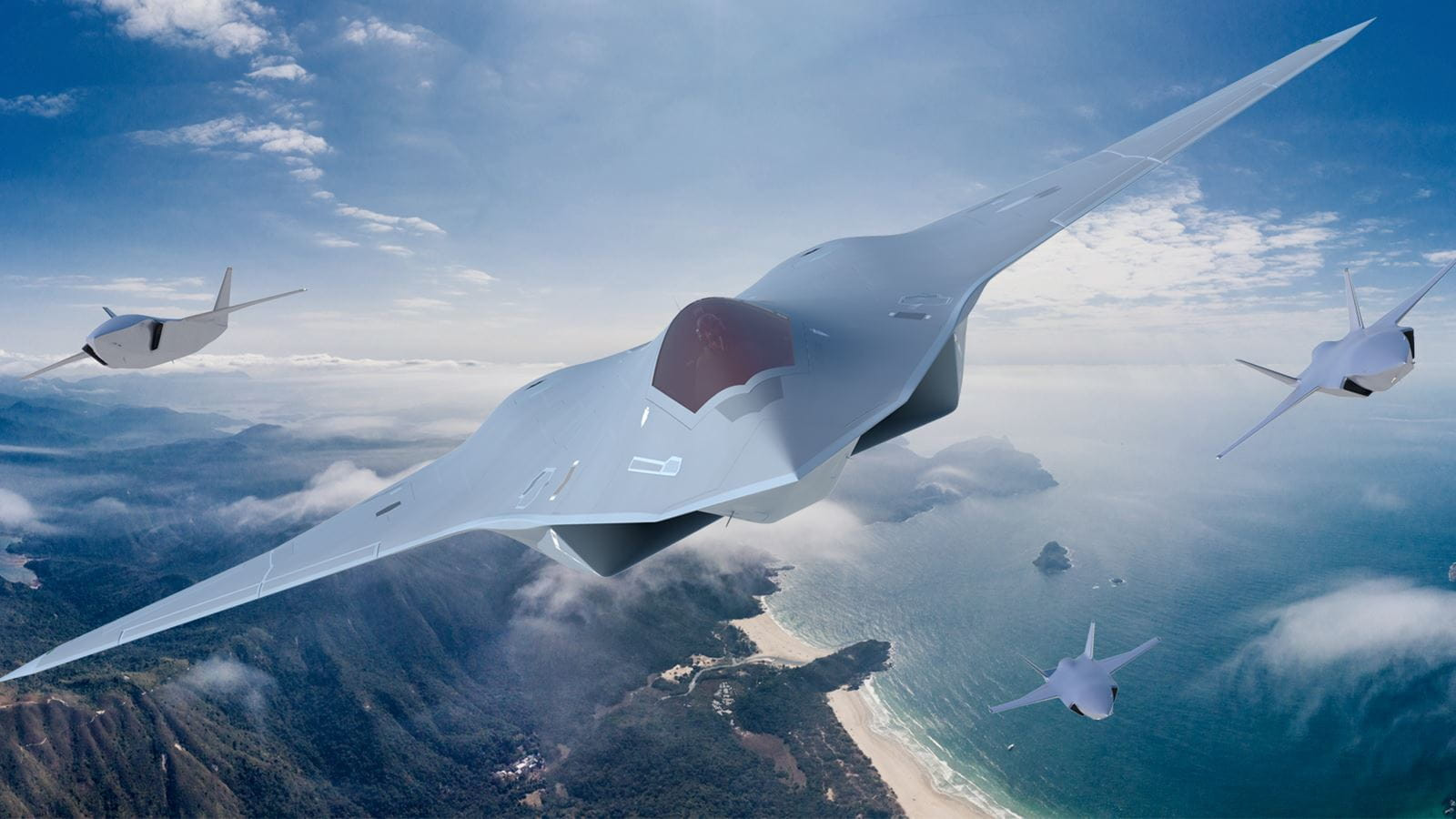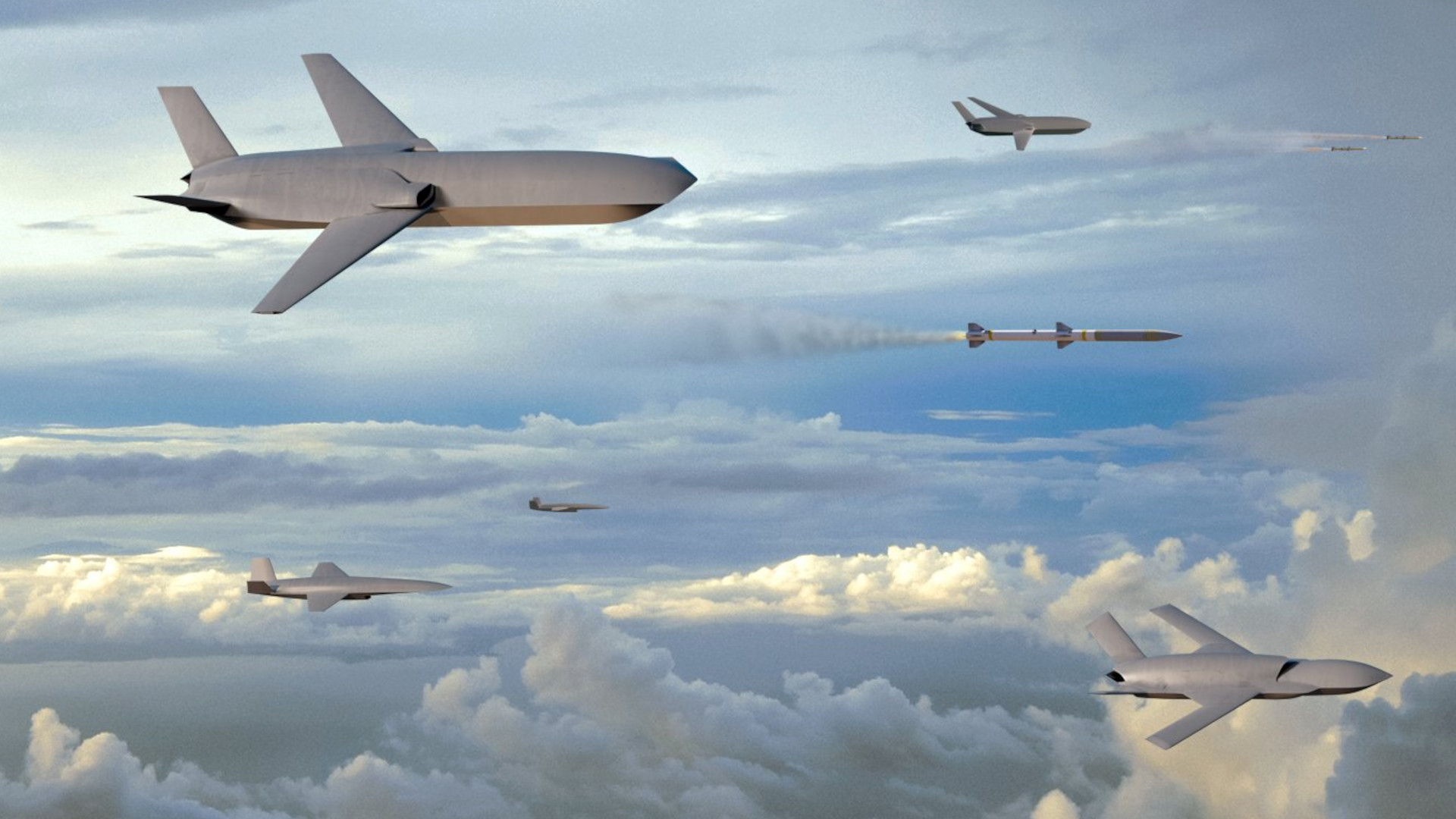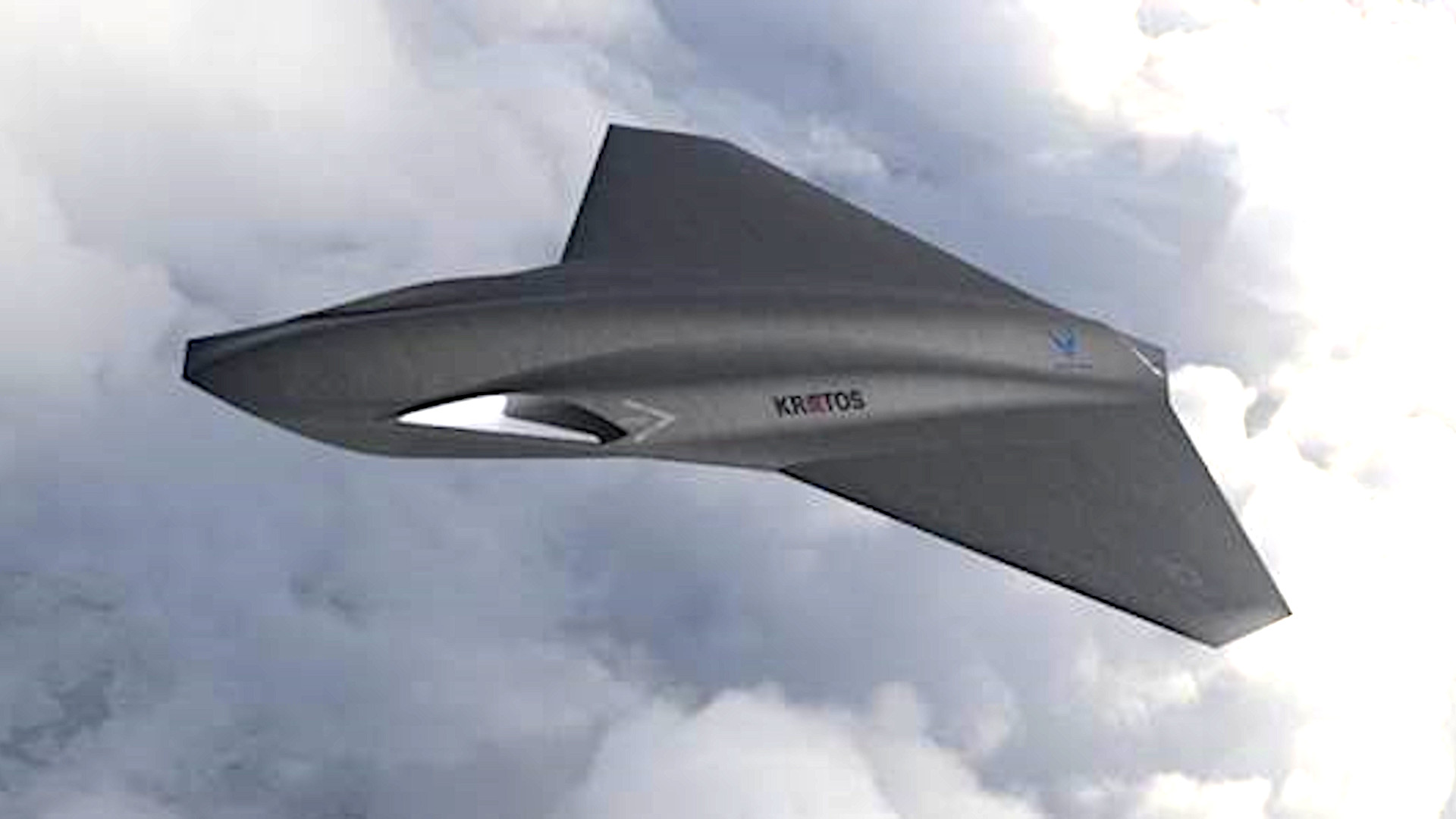Kratos has provided a rendering of its Thanatos drone, seen at the top of this story, for the first time. The company says it hopes to have gotten a contract by next year related to this stealth drone, the most advanced design the company has unveiled to date. Though the potential customer remains unnamed, the artist’s conception includes a U.S. Air Force logo, suggesting this could be tied to the service’s Collaborative Combat Aircraft program or other advanced drone projects.
The Thanatos rendering was released earlier today as part of the announcement of Kratos’ financial results for the third quarter of 2023. Thanatos was named as one of several “new program opportunities” that would require additional investment in 2024, but that could then lead to significant growth from the company in 2025.

“We are in discussions with a customer and hope to be under contract next year related to certain other Kratos tactical drone systems, including Thanatos,” Eric DeMarco, Kratos’ President and CEO, said in a press release.
That Kratos has been working on a drone called Thanatos has been publicly known since at least 2019, as The War Zone has previously reported, but no details about it have been released before now. It has also been well-established for years now that Kratos has multiple classified uncrewed aircraft designs in its ever-expanding portfolio.

Information about Thanatos – the name of a Greek mythological figure who is the personification of death – remains limited and The War Zone has reached out for more details.
The rendering does show a tailless uncrewed aircraft with a number of textbook low-observable (stealthy) elements, including a shovel nose design, deep chine line, blended and recessed inlets, and a platypus-like trailing edge extension concealing a recessed exhaust. A tail design like this helps significantly reduce an aircraft’s infrared signature on top of its radar stealth features.

Thanatos also has diamond-shaped wings, which can offer reduced drag at high subsonic and supersonic speeds.
Altogether, Thanatos is by far the most advanced drone concept Kratos, which started out making target drones for use in test and training and research and development activities, has ever publicly put forward.
As has already been noted, the rendering shows Thanatos wearing both a Kratos logo and a U.S. Air Force logo. We have seen this combination in renderings of other drones the company has pitched to the Air Force in the past. This makes it very likely that the potential customer Kratos is hoping to get a contract from in relation to this design is the Air Force.


What specific program or programs Thanatos might have been developed for is unknown. However, the Air Force is very actively pursuing a future fleet of advanced drones with high degrees of autonomy intended, at least at first, to primarily operate in close cooperation with crewed combat jets as part of its Collaborative Combat Aircraft (CCA) program. The service has defined three key mission areas – serving as weapon trucks loaded with air-to-air missiles to support crewed fighters, acting as additional sensing nodes, and providing electronic warfare capabilities – for those drones so far. CCAs, or variants or derivatives thereof, could eventually take on other missions and work with a broader array of crewed platforms, including B-21 Raider stealth bombers, as well as operate on their own.
The Air Force is still refining its CCA requirements and its vision for how it will employ these uncrewed aircraft, but has already said it wants to acquire at least 1,000 of them, if not many more. The 1,000-drone figure was based on a concept of operations that would see two CCAs paired with each of 200 new sixth-generation crewed stealth combat jets and 300 F-35A Joint Strike Fighters. The CCA effort and the sixth-generation stealth jet project are both part of the Air Force’s larger Next-Generation Air Dominance (NGAD) initiative.

In the past, the Air Force has said it hopes to kick off a competition to pick one or more CCA designs in the 2024 Fiscal Year, which began on October 1, and that formal work on at least the initial batch of those drones could begin in Fiscal Year 2025.
All of this would be in line with Kratos’ comments so far that the stealthy-looking Thanatos is aimed at an opportunity in the coming year that could potentially begin to bear real fruit financially the year after. Competition over CCA program contracts is expected to be fierce and many companies large and small are already preparing their own proposals.

While the possibility of this aircraft being a CCA contender may be the most top of mind, Thanatos could be even more advanced, and potentially costlier, than many of the designs that have been suggested as possible CCA competitors in the past. It could potentially be a more traditional unmanned combat air vehicle (UCAV) designed with larger payloads and intended for more independent operations than CCAs. The USAF is also in need of a stealthy aggressor drone for training, as well, but that seems less likely here, although frontline unmanned systems could easily serve in a training role as well.
CCA is far from the only advanced drone program the Air Force is running, either, and Kratos has already been heavily engaged with the service in recent years as part of other efforts. This has included the use of Kratos’ XQ-58A Valkyrie and UTAP-22 Mako drones as part of advanced autonomy development projects and other test and evaluation work.

This is also just what we know about publicly. Much about NGAD alone remains heavily classified and that there are other advanced Air Force drone developments in the ‘black’ realm.
In addition, while the Thanatos rendering shows the Air Force logo, that service is not the only one within the U.S. military to be pursuing advanced drone capabilities. The Navy has its own separate NGAD effort, which includes plans for new crewed and uncrewed aircraft, and it has been actively coordinating and collaborating with the Air Force on relevant technologies. The two services explicitly want to be able to hand off control of their respective CCAs and other drones back and forth freely during future operations.
The U.S. Marine Corps just recently began flying its own Kratos XQ-58As as part of a project to help it refine its future advanced drone plans, as you can read more about here.

Whatever Kratos’ vision for Thanatos might be, now that we have our first look at the design, more details about it may now begin to emerge.
Contact the author: joe@thedrive.com
